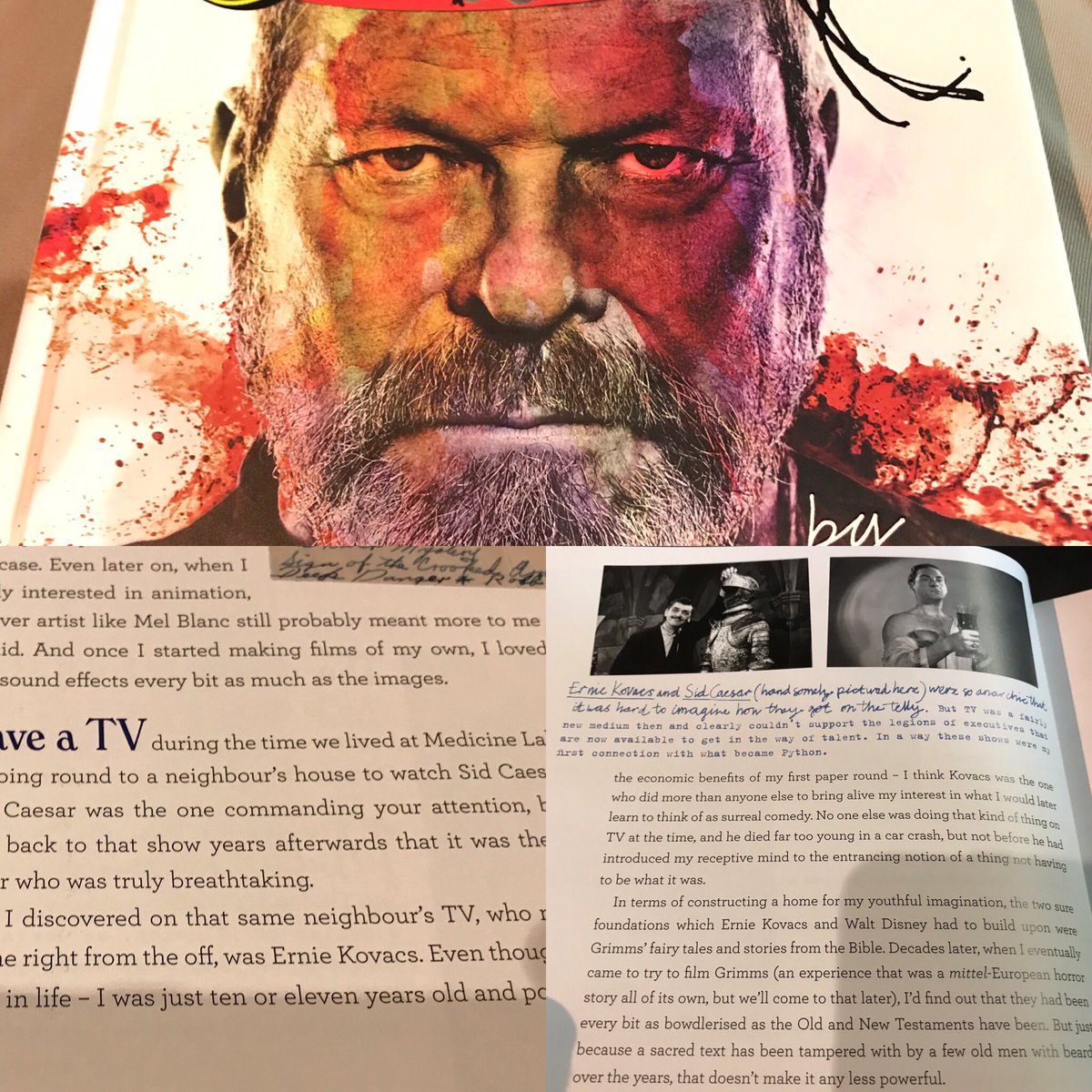Gilliamesque
Overview
The screenwriter, innovative animator, highly acclaimed visionary film director, and only non-British member of Monty Python offers an intimate glimpse into his world in this fascinating memoir illustrated with hand-drawn sketches, notes, and memorabilia from his personal archive.
From his no-frills childhood in the icy wastes of Minnesota, to some of the hottest water Hollywood had to offer, via the cutting edge of 1960s and ’70s counter-culture in New York, L.A. and London, Terry Gilliam’s life has been as vivid, entertaining and unorthodox as one of his films.
Gilliamesque: A Pre-posthumous Memoir 3.91 avg rating — 689 ratings — published 2015 — 19 editions Want to Read saving. Anyway, it looks like the other Pythons never got your memo because I attended the launch of Terry Gilliam's Gilliamesque book at the Royal Festival in October 2015 and chatted with him at the stage door afterwards. No mention at all that I was 'banned' from speaking to him. He gave me a big hug and was really friendly to me as always, as you. Enjoy the videos and music you love, upload original content, and share it all with friends, family, and the world on YouTube. 'Gilliamesque' covers his life to date, beginning with his early years in Minnesota, through his time in California and New York, and then his auspicious move to England that ultimately led to his joining the Pythons and spending decades behind the camera making bizarre, luscious art.
Gilliamesque Book Review
Telling his story for the first time, the director of Time Bandits, Brazil, The Adventures of Baron Munchausen, The Fisher King, 12 Monkeys, and Fear & Loathing in Las Vegas—not to mention co-founder of Monty Python’s Flying Circus—recalls his life so far. Packed with never-before-seen artwork, photographs and commentary, Gilliamesque blends the visual and the verbal with scabrous wit and fascinating insight.
Gilliam’s “pre-posthumous memoir” also features a cast of amazing supporting characters—George Harrison, Robin Williams, Jeff Bridges, Robert De Niro, Brad Pitt, Uma Thurman, Johnny Depp, Heath Ledger and all of the fellow Pythons—as well as cameo appearances from some of the heaviest cultural hitters of modern times, from Woody Allen to Frank Zappa, Gloria Steinem to Robert Crumb, Richard Nixon to Hunter S. Thompson. Gilliam’s encounters with the great and the not-so-good are revealing, funny, and hugely entertaining.

This book is an unrestrained look into a unique creative mind and an incomparable portrait of late twentieth-century popular culture.

Gilliamesque: A Pre-posthumous Memoir
In a cheerful and breezy tone, Gilliam recounts that evolution beginning with a childhood that began in Minneapolis in 1940 and then shifted to Los Angeles when he was 10. He was the kind of kid that every Eisenhower-era parent would be proud to have—a well-mannered, church-going lad who got himself elected both class valedictorian and prom king. After graduating from Occidental College, he went to work as an editorial assistant for a new satirical magazine called 'Help!' and also dabbled in advertising as well. As the Sixties progressed, however, the cheerful anarchy in his work began to take on a more anti-establishment tone. In response to the changing times and towards the end of the decade, he would finally leave his home country to relocate in London. There, he began working in television, where a collaboration with Eric Idle would eventually lead to his being asked to join a group of British comedians to form Monty Python.
Gilliamesque Meaning
This section of 'Gilliamesque' is by far the most interesting of the book, if only because it deals with material that is relatively fresh to all but the most insanely devout fanatics. Gilliam has raided his archives for this project and the illustrations alone make the book a must-own for his fans. There are numerous examples of his early stabs at artwork that show how his unique visual style evolved over the years. For example, Gilliam includes the advertising graphics he designed for potboiler films produced by Universal (the very same studio that he would go to battle against years later over 'Brazil'), and photocomic strips that featured the likes of Woody Allen and John Cleese. There are even examples of his very brief career as, of all things, a male model.
J Gilliam Inc
Once the narrative gets to the Python years and his directorial career, 'Gilliamesque' becomes slightly less interesting. Part of that is, I suppose, somewhat inevitable—Python has been the subject of so many books, documentaries, and memoirs that even with Gilliam telling the story from his perspective, it does feel a little too familiar. (That said, the part dealing with him going to America to go to court against ABC regarding the broadcast of Python episodes that had been reedited without their permission—a case that would lead to the group assuming full legal ownership of their work and setting themselves up financially for life—is quite entertaining.) Likewise, Gilliam doesn't really bring anything new to the table about the travails that beset him during the making of 'Brazil,' 'The Adventures of Baron Munchausen' and the never-completed 'The Man Who Killed Don Quixote.' Anyone looking for in-depth coverage of such later projects as 'The Brothers Grimm' (where he had constant battled the Weinstein brothers who he frequently alludes to without going into any significant detail), 'The Imaginarium of Dr. Parnassus' or his recent mind-bender 'The Zero Theorem' will be disappointed by the cursory treatment he affords them. It seems like Gilliam spends more time talking about accidentally slicing up his arm while attempting to change a lawnmower blade than he does discussing 'Tideland,' the highly controversial 2005 drama about a troubled girl that sharply divides even his most ardent fans.
